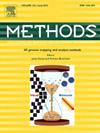PCR-generated DNA templates enable efficient, rapid, and cost-effective mRNA synthesis
IF 4.3
3区 生物学
Q1 BIOCHEMICAL RESEARCH METHODS
引用次数: 0
Abstract
In vitro transcription (IVT) is a widely used technique for mRNA synthesis in both basic research and the development mRNA-based vaccines and therapies. The efficiency of IVT critically depends on the quality and integrity of the linear DNA templates. The conventional method for template DNA preparation involves plasmid propagation in bacteria followed by enzymatic linearization, which is labor-intensive and costly. Here, we describe a cell-free, PCR-based approach for generating high-quality, high-yield linear DNA templates. We extensively compared the PCR-based method with the conventional plasmid-based approach in terms of IVT efficiency, mRNA production, and the immunogenicity of the resulting mRNA-LNP (lipid nanoparticle) vaccines. Compared to the plasmid-derived DNA, the PCR-based method yielded higher amounts of both DNA templates and transcribed mRNA, while maintaining mRNA quality and integrity. Importantly, mRNA-LNP vaccines encoding the SARS-CoV-2 spike protein, generated from both methods, elicited robust and comparable immune responses in mice, with no significant differences observed between the two template methods. Our findings highlight the advantages of PCR-generated DNA templates as a rapid, efficient, and cost-effective alternative for mRNA synthesis, with broad applications in vaccine and therapeutic development.
pcr生成的DNA模板能够高效、快速、经济地合成mRNA。
体外转录(IVT)是一种广泛应用于基础研究和开发基于mRNA的疫苗和疗法的mRNA合成技术。IVT的效率主要取决于线性DNA模板的质量和完整性。传统的模板DNA制备方法包括在细菌中进行质粒增殖,然后进行酶线性化,这是一种劳动密集型和昂贵的方法。在这里,我们描述了一种无细胞、基于pcr的方法,用于生成高质量、高产率的线性DNA模板。我们在IVT效率、mRNA产量和mRNA- lnp(脂质纳米颗粒)疫苗的免疫原性方面广泛比较了基于pcr的方法与传统的基于质粒的方法。与质粒衍生的DNA相比,基于pcr的方法产生了更高数量的DNA模板和转录mRNA,同时保持了mRNA的质量和完整性。重要的是,两种方法生成的编码SARS-CoV-2刺突蛋白的mRNA-LNP疫苗在小鼠中引发了稳健且相似的免疫反应,两种模板方法之间没有观察到显著差异。我们的研究结果突出了pcr生成的DNA模板作为mRNA合成的一种快速、高效和经济的替代方法的优势,在疫苗和治疗开发中具有广泛的应用。
本文章由计算机程序翻译,如有差异,请以英文原文为准。
求助全文
约1分钟内获得全文
求助全文
来源期刊

Methods
生物-生化研究方法
CiteScore
9.80
自引率
2.10%
发文量
222
审稿时长
11.3 weeks
期刊介绍:
Methods focuses on rapidly developing techniques in the experimental biological and medical sciences.
Each topical issue, organized by a guest editor who is an expert in the area covered, consists solely of invited quality articles by specialist authors, many of them reviews. Issues are devoted to specific technical approaches with emphasis on clear detailed descriptions of protocols that allow them to be reproduced easily. The background information provided enables researchers to understand the principles underlying the methods; other helpful sections include comparisons of alternative methods giving the advantages and disadvantages of particular methods, guidance on avoiding potential pitfalls, and suggestions for troubleshooting.
 求助内容:
求助内容: 应助结果提醒方式:
应助结果提醒方式:


